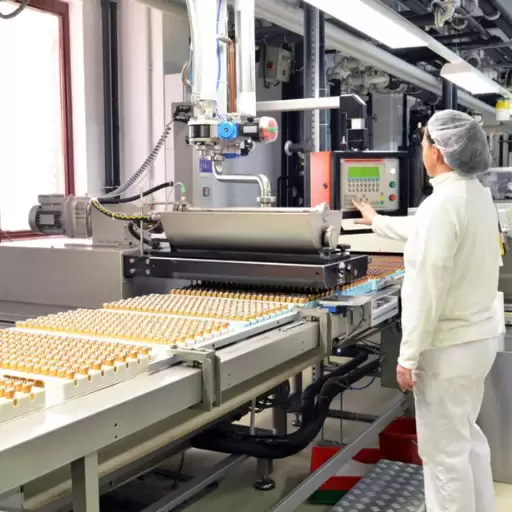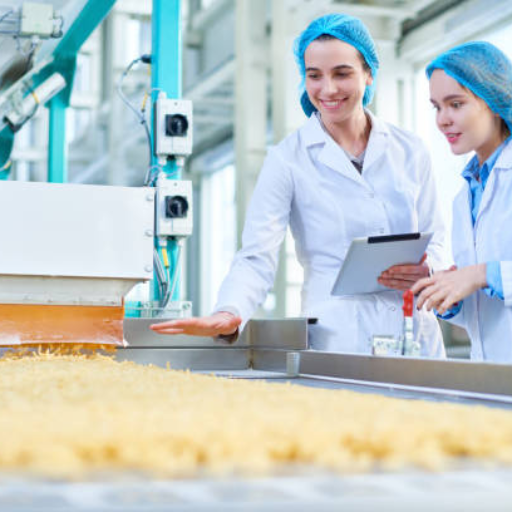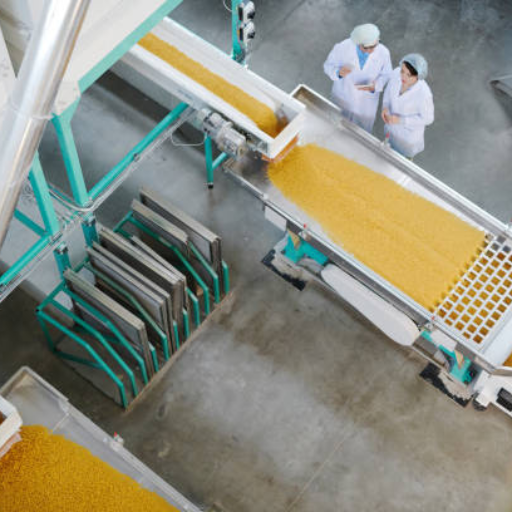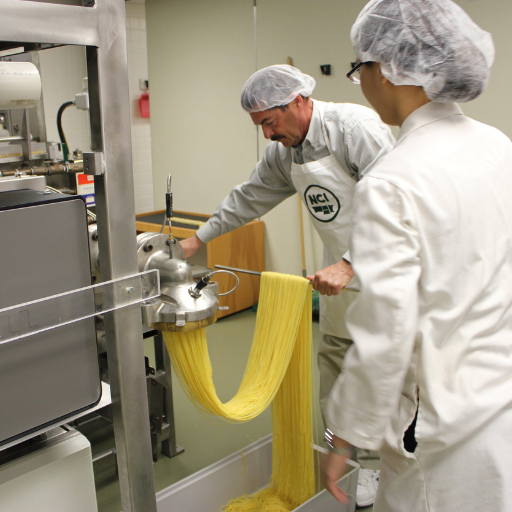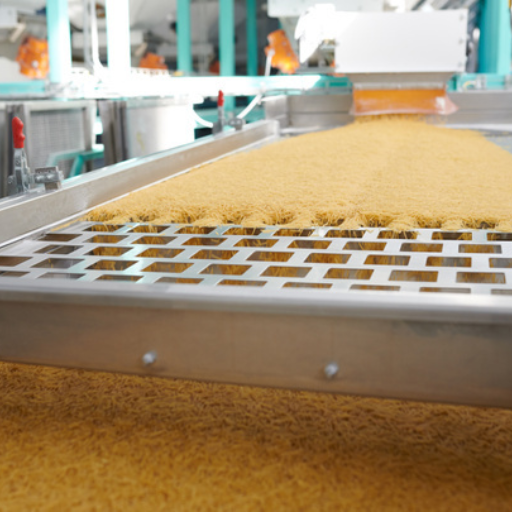In this comprehensive guide, we will delve into the fascinating world of pasta production, exploring the journey from raw materials to the creation of high-quality pasta. This blog aims to provide readers with a thorough understanding of the essential components and technological processes involved in pasta manufacturing. By examining the types of raw ingredients, the machinery used, and the various production techniques, we will uncover the secrets behind producing pasta that meets both culinary and nutritional standards. Whether you are a pasta enthusiast, a professional in the food industry, or simply curious about the intricacies of pasta production, this article will serve as an informative resource to enhance your knowledge and appreciation of this beloved staple food.
What is Pasta Production and How Does It Work?
Understanding the fundamentals of pasta production
The basic steps in pasta production involve converting raw materials such as durum wheat semolina and water into a highly versatile food known as pasta which is enjoyed by people all over the world. It starts with mixing semolina and water to form dough, kneading it until it gets the desired consistency. Extrusion or pressing is employed in shaping this particular dough into various types of pasta. Drying then takes place, removing moisture from pasta to prolong its shelf life. Therefore packaging is done as a final step where it is prepared for distribution and eventual use. Each step that ranges from high quality ingredient selection and drying technique impacts the texture, taste and nutrition value of the final product.
Major Steps In The Pasta Production Procedure
- Mixing: The first process in producing pasta involves incorporating durum wheat semolina with water where the dough then needs to be thoroughly mixed so that it attains correct consistency. Ensuring that the semolina used has good quality and that there is appropriate hydration are important aspects to come up with a workable dough.
- Kneading and Resting: The next stage involves folding the dough repeatedly to establish gluten nets so as to obtain elasticity which is vital for proper shaping of pasta products. Once folded, rest period follows leading to even moistness throughout.
- Shaping: The next phase shapes the raw product by either extrusion or pressing method. Dough’s extruded through metal dies into spaghetti, penne or macaroni shapes while pressing entails rolling out dough before cutting them into fettuccine or lasagna sheets.
- Drying: After shaping, most water contained within shaped pastas shall be removed by drying process thus making them store for longer time periods hence retain their forms when subjected to boiling or any other cooking methods applied on them. Therefore, utmost care should be taken during drying so as not to cause cracking or allow over-drying because they interfere with texture besides other quality issues.
- Packaging: Finally, the dried pasta is packaged to protect it from environmental factors and contamination. Proper packaging maintains the pasta’s freshness and quality until it reaches the consumer. Packaging often includes appropriate labeling to provide consumers with nutritional information and cooking instructions.
Through this critical step by step procedure, they are able to produce a final product which is of high quality and ready for meeting culinary as well as nutrition requirements.
Role of Raw Materials in Pasta Production
To create excellent pasta, high-quality raw materials are required. Primary ingredient (durum wheat semolina) offers essential gluten network structure as well as hard texture that makes perfect pasta. Another determinant factor is quality water requirements; it must be clean, pure without impurities so as to have consistent dough. On top of that eggs are added in some types of pastas for better taste experience while others may include vegetable puree or herbs spices giving different flavors and colors making them more appetizing on plate. Preparations made with good ingredients also cook differently; their taste will vary depending on how best they were done, thus influencing satisfaction derived from having such a meal among other things like its content too.
How Do You Choose the Right Raw Material for Pasta Production?
Comparing Durum Wheat with Other Flours
When deciding on the best flour for producing pasta, durum wheat ranks above other flours. The unique properties of durum wheat make it perfect for making fine pasta. Semolina is a type of flour made from durum wheat, which consists of high protein and strong gluten network providing for firmness and elasticity in pasta preparation. This results into a desirable texture and also enable the pasta to retain its shape during cooking process.
In contrast, common wheat (Triticumaestivum) found in all-purpose flour has low levels of protein and gluten. As such, pastas prepared from common wheat flour have a tendency to be softer and may not hold their shapes well when cooked turning out mashed.
Furthermore, durum wheat has more yellow pigments; the reason as to why the color of this product is golden brown. Such visual attraction combined with excellent texture makes durum wheat most suitable for use in preparing pasta. On the other hand, other flours can be used to produce different textures and flavors but fine quality pastas are mostly made from semolina derived from durum wheat crop thereby ensuring continual contentment with every meal.
Role played by Semolina in Pasta Production Process
Semolina is obtained from durum wheat which is an essential component in making pasta. High proteins levels and gluten present in semolina result into desirable hard yet soft textured nature of the resultant vessels. The fact that during boiling semolina does not disintegrate enables it to give way firm or mushy pastes like other types of similar products that may be around – together with its natural course grains these help sauce stick better while enhancing eating experience throughout. Moreover, since semolina imparts a golden hue on pasta without any artificial additives it enhances its appearance making it more inviting too consume. Meanwhile, semolina supports durability as well as outlook hence it is inevitable to ignore this important component when it comes to making good pasta that will always have the same flavor and taste.
The Influence of Source Material on Pasta Quality
The kind of raw material used in producing determines the quality of pasta. Durum wheat semolina is preferred because it contains high levels of protein and gluten which are necessary for a firm, al dente type of texture wanted from this food. The protein network in semolina strengthens the pasta so that it does not lose its shape while cooking. However, common wheat flour has lower amounts of protein and gluten making pastas from it tends to be more tender and with fewer possibilities to hold its shape during boiling these renders them softer or mushy when cooked.
Also critical is granularity and pigmentation of the flour. Being coarse-grained, semolina creates better sauce binding hence increasing overall pleasure in eating whereas yellow pigment is responsible for aesthetical appeal to a cook’s eye. Hence semolina becomes the number one choice for manufacturing top-quality pasta due to such combination as sturdiness-property-look then other flours can also fit into this criterion but certainly they can’t match up with durum wheat’s semolina if we talk about really delicious dishes.
What Are the Different Methods of Pasta Production?
Traditional versus Modern Pasta Production Techniques
In the traditional methods of making pasta, it is done manually starting from kneading the dough to shaping and drying the pasta. Quite often, artisanal techniques revolve around using basic tools like wooden boards and hand cranked machines. By doing this, they are able to control every stage of the process giving it an attention to detail edge over the other two types mentioned above. In fact, one of the main characteristics of traditional pasta making is that it utilizes slow drying methods which can take many hours or even days. These long hours in low temperatures enable preservation of flavor, texture as well as nutrients.
However, modern pasta production relies on modern machinery and technology to produce large quantities. Industrial pasta producers use high capacity mixers, extruders and automated drying systems just to mention a few examples of technology employed in these factories. High temperature drying speeds up this process which takes only a few hours unlike in earlier time where it would be stretched throughout several days. Although this method allows for economies of scale and lower prices it may sometimes result into some loss in texture or taste when compared with ordinary handmade pastas made by following traditional rules. Moreover, recent methods have also enabled production of different shapes such as lasagne sheets among others while concurrently catering for diverse market preferences.
The Role Played by Extrusion in Modern Pasta Production
Consequently; efficiency is why extrusion is an important part of any modern pasta factory because through this process all sorts shapes are created for instance spaghetti or penne shape. During extrusion dough is passed through dies under high pressure. This not only gives shape but also alters its eating feel during cooking especially due to variation caused by water absorption rate during boiling phase. The resultant dense and even product that boils uniformly is achieved through the use of high pressure. The current extrusion machines are capable of producing various complex shapes of pasta, which are innovative to cater for different consumers. It may also include other ingredients like whole grains or vegetable purees in order to add to the nutrition value of the final product. Therefore, extrusion plays a key role in meeting quality and versatility requirements with modern consumers.
Dry Pasta Production Process
The initial stage is mixing durum wheat semolina and water to form dough for dry pasta production. This dough is then kneaded thoroughly before being passed through an extruder that shapes it into different types of pasta such as spaghetti, penne rigate or fusilli. Dough goes through dies during extrusion so as to obtain its shape. After shaping, pre-drying is done where the temperatures are kept low to prevent cracking. Then, it is subjected to higher temperatures for complete drying in controlled environment removing moisture content from it and making it shelf stable. Finally, the gradually cooled dry pasta can be packed off ready for distribution purposes without undergoing thermal shocks. Hence ensuring a long shelf life product fit for long term storage at homes.
How to Achieve High-Quality Pasta?
The Impact of Extreme Temperatures on the Quality of Pasta
High-temperature drying is a key determinant of pasta quality. The process entails drying at temperatures above 70°C (158°F) accelerating moisture removal and increasing production efficiency. It also provides support for uniformity in the cooked product, which does not crumble or soften when boiled. Furthermore, high temperature drying helps to ensure that there is a uniform texture throughout with no microbial growth, hence making the pasta safe for consumption over long periods. However, caution should be taken because excessively high temperatures result in brittleness or nutritional compromises within the pasta. This means that appropriately controlled high temperature drying is vital for the manufacture of quality pasta that meets consumer demands.
Understanding Gluten and Gluten-Free Pasta
Pasta owes its chewiness and elasticity to gluten which is a protein found in wheat, barley and rye. Traditional Italian pasta has been produced from durum wheat semolina rich in gluten content. The structure and texture of the product are derived from this gluten matrix that traps air as well as moisture within it. Yet consuming gluten can cause negative health effects to people who suffer from gluten intolerance or celiac disease.
On the other hand, gluten-free types are manufactured using grains like corn, rice, quinoa or legumes among others instead of flour made from those three grains mentioned earlier. The absence of glutens requires manufacturers to employ different techniques as well as ingredients if they have to produce products with tastes and textures similar to ordinary pastas. Despite these challenges however, advanced food technology has come up with gluten free pastas that are increasingly approximating their counterparts made out of wheat flour in terms of taste and consistency.
While it may seem obvious that nutritional values differ between regular pasta and some varieties labeled “gluten-free,” this distinction does not apply across all available brands. Some makers add vitamins/minerals to non-gluten versions so as to match original nutrients’ balance; thus, providing a complete diet for people avoiding gluten.
Best Practices in Pasta Processing and Drying
High-quality pasta production follows several crucial stages, each demanding close attention in order to maintain the integrity of the product and ultimately satisfy the customers. The following are some of the recommended practices that have been identified from authoritative sources:
Choosing Quality Ingredients:
- For traditional pasta, purchase high quality durum wheat semolina in order to achieve a desired texture as well as chewiness through formation of a firm meshwork consisting mainly of gluten. For gluten-free alternatives, it is necessary to select reliable suppliers of other cereals e.g. rice, corn or quinoa among others.
Attaining Consistency in Dough Mixtures:
- Hydration should be right. Make dough by mixing water with semolina such that it is uniform throughout. However keep the dough not too dry or too wet hence preventing any issues during extrusion and drying process.
Extrusion Process:
- Bronze dies should be preferred during extrusion for roughness on dried pastas’ surfaces that helps sauce stick better… Extruders must be regularly examined and cleaned so there are no impurities and all macaroni shapes remain consistent.
Control Over Drying Conditions:
- Temperature and humidity have to be balanced within controlled drying atmospheres. Thus high temperature drying should be conducted carefully because over-drying causes brittleness while under-drying leads to mold growth making them spoil easily.
Storage and Packaging:
- Keep dried pasta in cool dry places where it cannot absorb moisture and this would extend its shelf life considerably more. Such packing is air tight so that pasta cannot get dampened by humidity plus pests can also stay out keeping it fresh at all times.
With these developments, food companies can produce pastas which are both tastier than before yet nutritional at the same time according consumers taste buds instead mere health products for fulfilling dietary requirements.
What Equipment is Essential in a Pasta Production Line?
Significance of Mixers and Extruders
Mixers and extruders are critical in pasta making line, both acting as deciding factors on the quality of the end product. Mixers combine ingredients for traditional or gluten-free pasta into a well mixed dough. The process is known as dough development which helps to achieve specific texture and structure desired in the final product. Conversely, extruders shape the paste by passing it through specific dies that result in different shapes and sizes. Employing bronze extrusion dies results in a rougher surface texture on the cooked pasta leading to better sauce retention properties. Together they ensure consistency, uniformity as well as excellent quality of final product thus enabling manufacturers to effectively meet customer expectations.
Efficiency and Energy Consumption in Pasta Production
In terms of efficiency and energy consumption in making pasta, I look at every step with an aim of maximizing output. By embracing contemporary machines powered using minimal electricity, it is possible to reduce my power bills significantly. Also use high efficient motors and programmable logic controllers (PLCs) so that your equipment can work effectively even when there are fluctuations in production needs. Additionally, heat recovery from various parts such drying will help reduce energy wastage through reuse within the factory. These measures enhance overall efficiency by ensuring smooth production flow; minimizing idle time while upholding equipment maintenance that makes it possible for all processes taking place along the entire line become more sustainable thereby saving cost.
The Role of Dryers in Ensuring Pasta Quality
Drying is very important during pasta production where dryers play a crucial part in guaranteeing good quality of end products. Drying ensures that pasta dries uniformly without any cracks or deformities through regulation temperature levels humidity inside dryers.Moisture reduction can be gradual due to modern drying technology leaving nutritional values unchanged while retaining its tenderness at least until fully dried.Efficient dryers also minimize fading color hence durability.Nevertheless, efficient working of dryers is paramount when processing high quality pasta that meets my standards and what the consumers anticipate.
Frequently Asked Questions (FAQs)
Q: What are the effects of processing variables on pasta product quality?
A: Temperature, humidity, and extrusion pressure are some of the most important processing variables controlling the quality of such products. They influence pasta’s texture, cooking time, and nutrition.
Q: How is long pasta produced differently from short pasta?
A: The production of long pasta versus that of short pasta is characterized by their extrusion and drying needs. Long pasta should be handled gently to avoid breaking while short one should be dried uniformly for high product quality. Therefore, both must be well managed to produce a perfect final product.
Q: What functions does bran perform in regard to producing pasta?
A: For instance, bran may be used in the production of macaroni for increasing fiber content thus improving its nutritional value. This need not only ensures uniformity in texture but also good quality pasta.
Q: How can manufacturers improve their efficiency when making pastas?
A: More efficient productions by producers of noodles include among others; improving raw material selection for better inputs into the machines and drying techniques that are more advanced as well as enhancing processes during extrusion leading to increased rates while still maintaining an acceptable level of product quality.
Q: What importance does water absorption play in the process of making pastas?
A: Proper water absorption is crucial for achieving a uniform dough which influences the texture and final quality of the end products. In effecting this result, water absorption will determine how it looks like while being boiled.
Q: How do different types of pastas affect production techniques?
A:wide variety such as fresh or hard versions requires varied procedures during manufacturing depending on each type. It therefore implies that every kind has particular requirements concerning processing and drying conditions that must be closely monitored with respect to high standard practices followed resulting into consistency throughout volumes produced.












